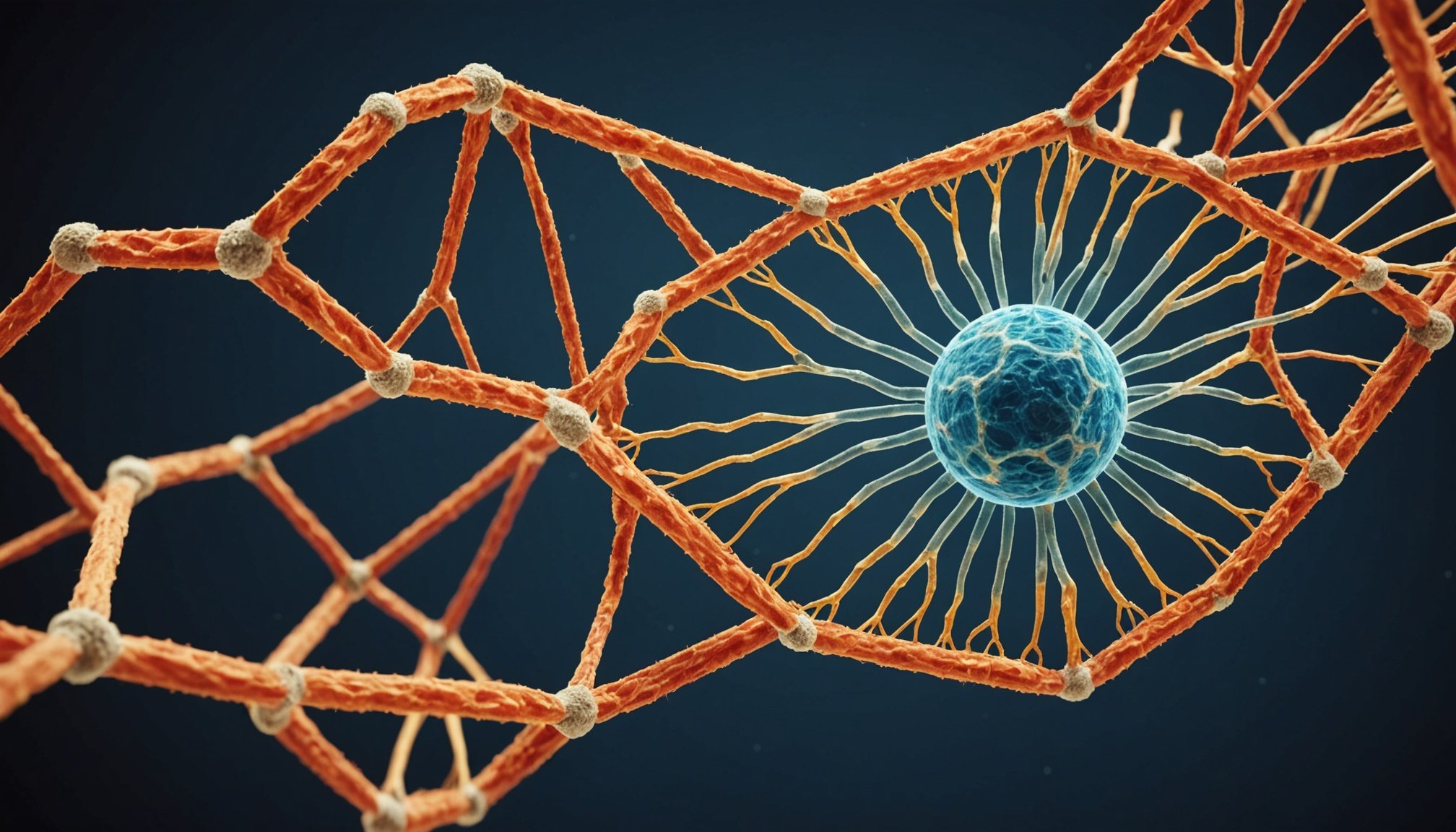Unpacking the Ethical Dilemmas of CRISPR Technology in Genetic Disorder Treatment to CRISPR Technology
CRISPR (Clustered Regularly Interspaced Short Palindromic Repeats) technology has revolutionized the field of genetic engineering, offering unprecedented precision in editing the human genome. This powerful tool, discovered in the early 2010s, allows scientists to modify DNA sequences with ease, opening up new avenues for treating genetic diseases. However, alongside its promising potential, CRISPR raises a myriad of ethical dilemmas that need to be carefully considered.
The Science Behind CRISPR
To understand the ethical implications, it’s crucial to grasp how CRISPR works. The CRISPR-Cas system is a bacterial defense mechanism that has been adapted for gene editing. Here’s a simplified breakdown:
Also to see : How Is Preventative Care Being Enhanced in the UK?
- CRISPR-Cas9: This is the most commonly used system. It involves a small RNA molecule called a guide RNA that is programmed to find a specific sequence of DNA.
- DNA Cutting: Once the guide RNA finds the target sequence, the Cas9 enzyme cuts the DNA at that site.
- Repair Mechanism: The cell’s natural repair mechanism kicks in, and scientists can introduce changes to the DNA sequence by providing a template for repair.
This precision editing capability has made CRISPR a game-changer in genetic research and therapy.
Potential Therapeutic Applications
CRISPR holds immense promise for treating genetic diseases. Here are some potential therapeutic applications:
Additional reading : How Is Preventative Care Being Enhanced in the UK?
Treating Genetic Diseases
- Sickle Cell Anemia: CRISPR can be used to correct the mutation in the HBB gene that causes sickle cell anemia.
- Cystic Fibrosis: Scientists are exploring CRISPR to correct the CFTR gene mutation responsible for cystic fibrosis.
- Muscular Dystrophy: CRISPR could potentially be used to repair the dystrophin gene, which is defective in muscular dystrophy patients.
Gene Therapy
- Ex Vivo Gene Therapy: Cells are taken from the patient, edited using CRISPR, and then returned to the body.
- In Vivo Gene Therapy: CRISPR is delivered directly into the patient’s body to edit cells in place.
Ethical Issues in CRISPR Gene Editing
While CRISPR offers significant therapeutic benefits, it also raises several ethical concerns.
Germline Editing
- Future Generations: Editing human embryos (germline editing) means the changes will be passed on to future generations. This raises questions about the long-term consequences and the potential for unintended effects.
- Example: The first case of germline editing was by Dr. He Jiankui in 2018, where he edited human embryos to make them resistant to HIV. This sparked global controversy and highlighted the need for strict regulations.
Mosaicism and Off-Target Effects
- Mosaicism: CRISPR can create mosaicism, where some cells are edited while others are not. This can lead to mixed outcomes and unpredictability.
- Off-Target Effects: CRISPR can sometimes edit unintended parts of the genome, leading to potential harm.
- Quote: “The off-target effects are a significant concern because they can lead to unintended consequences, including the introduction of new mutations that could be harmful,” says Dr. Jennifer Doudna, one of the pioneers of CRISPR technology.
Access and Equity
- Cost and Accessibility: CRISPR therapies are likely to be expensive, raising concerns about accessibility and equity. Will these treatments only be available to those who can afford them?
- Example: In the United States, the cost of gene therapies can be exorbitant, making them inaccessible to many patients.
Regulatory Frameworks
- Global Regulations: Different countries have varying regulations regarding CRISPR use. There is a need for a unified global framework to ensure ethical and safe use.
- France’s Approach: France is at the forefront of creating regulatory frameworks that ensure the ethical and responsible use of AI and CRISPR in medicine, as seen in their pharmacovigilance initiatives[1].
Detailed Ethical Considerations
Here are some detailed ethical considerations surrounding CRISPR technology:
Human Embryos and Germline Editing
- Moral and Ethical Debates: Editing human embryos raises profound moral and ethical questions. Is it right to alter the human genome in ways that will affect future generations?
- Table: Ethical Considerations in Germline Editing
| Ethical Consideration | Description |
|---|---|
| Future Generations | Changes will be passed on to future generations, raising questions about long-term consequences. |
| Unintended Effects | Potential for unintended effects or mosaicism. |
| Moral Implications | Alters the fundamental nature of human reproduction and inheritance. |
| Regulatory Challenges | Need for strict global regulations to prevent misuse. |
Informed Consent
- Patient Understanding: Patients must be fully informed about the risks and benefits of CRISPR therapies.
- Quote: “Informed consent is crucial. Patients need to understand what they are getting into, including the potential risks and benefits,” says Dr. Francis Collins, Director of the National Institutes of Health.
Privacy and Data Security
- Genetic Data: CRISPR involves handling sensitive genetic data, which must be protected from misuse.
- Example: The use of CRISPR in clinical trials requires robust data security measures to protect patient information.
Practical Insights and Actionable Advice
For those interested in the field of CRISPR and genetic engineering, here are some practical insights and actionable advice:
Staying Informed
- Follow Research: Keep up-to-date with the latest research and clinical trials through reputable sources like PubMed, Google Scholar, and Crossref.
- Example: The National Institutes of Health (NIH) regularly publishes updates on CRISPR research and its applications.
Ethical Considerations in Research
- Collaboration: Researchers should collaborate internationally to establish uniform ethical standards.
- Quote: “International collaboration is key to ensuring that CRISPR is used responsibly and ethically,” says Dr. David Liu, a leading researcher in the field.
Public Engagement
- Public Education: There is a need for public education and engagement to ensure that the broader community understands the implications of CRISPR technology.
- Example: Public forums and educational programs can help demystify CRISPR and address public concerns.
CRISPR technology is a double-edged sword, offering immense potential for treating genetic diseases while raising significant ethical dilemmas. As we move forward, it is crucial to address these ethical issues through robust regulatory frameworks, informed consent, and public engagement. By doing so, we can ensure that the benefits of CRISPR are realized while minimizing its risks.
Future Outlook
The future of CRISPR is promising but must be navigated carefully. Here are some key points to consider:
- Continuous Research: Ongoing research is necessary to improve the precision and safety of CRISPR.
- Global Cooperation: International cooperation is essential for establishing ethical standards and regulations.
- Public Awareness: Educating the public about CRISPR will help build trust and ensure that this technology is used responsibly.
As we embark on this journey, it is clear that CRISPR has the potential to revolutionize healthcare, but it is our responsibility to ensure that this revolution is ethical, safe, and beneficial for all.











